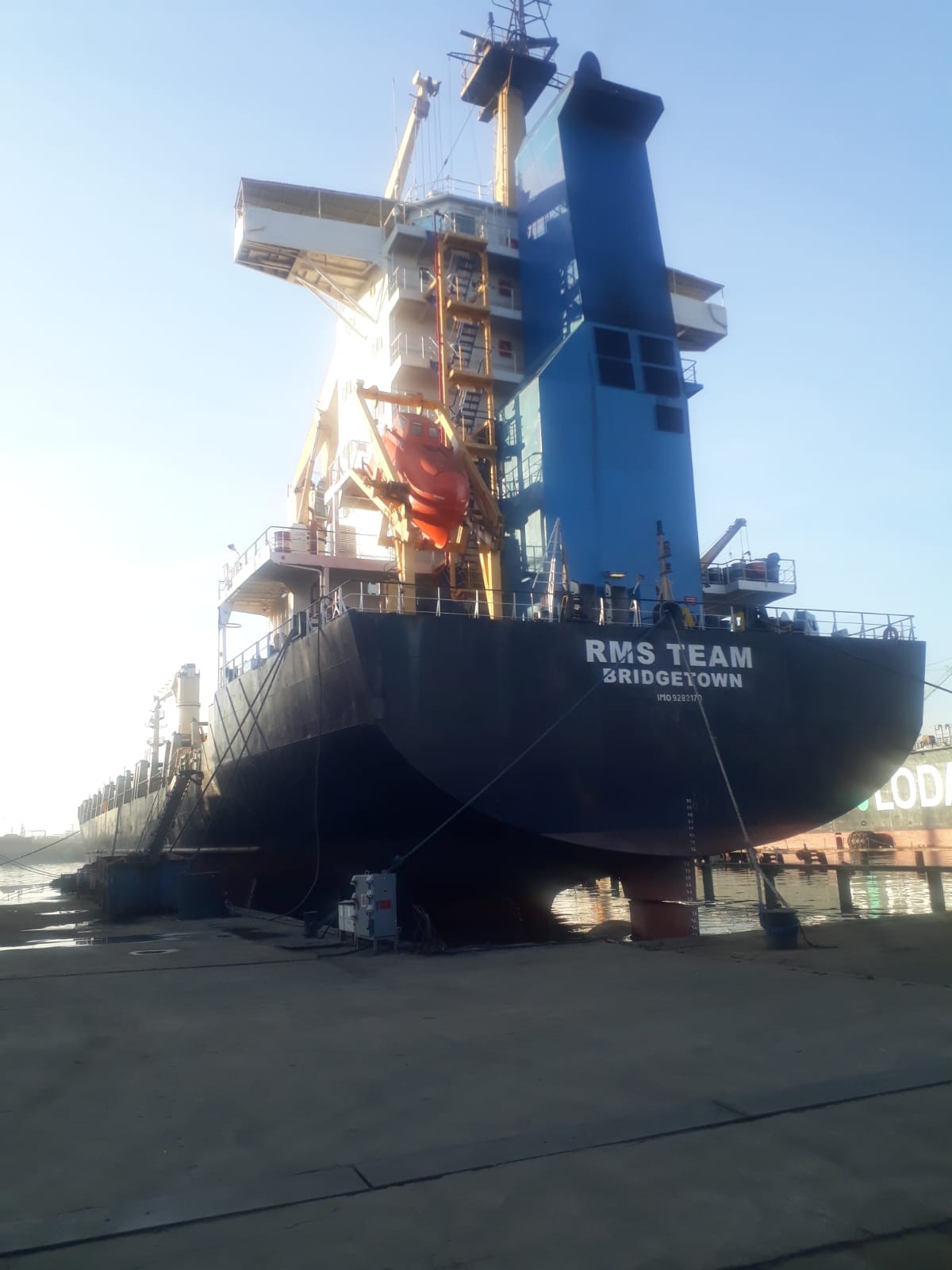Core Rebuilt: Crankshaft Replacement on the RMS Team Bridgetown
Heavy Engine Reconditioning and Structural Disassembly in Response to Bearing Seizure
Major engine interventions such as crankshaft replacement are among the most complex procedures in maritime engineering, and the operations aboard the RMS Team Bridgetown reflect this intensity. Following a crankshaft bearing seizure—often caused by oil starvation or excessive friction—the engineering team initiated a complete teardown of the MAN 7L 58/64 engine block. All cylinder liners, pistons, and covers were disassembled to expose the crankshaft for removal, with connecting rods and counterweights detached during this phase. Due to the size and weight of the shaft, the engine room bulkhead was cut to create clearance, and 10-ton slings were rigged for extraction using overhead lifting systems. Special attention is typically given to aligning the sling system with the shaft’s center of gravity to avoid torsional stress during lift. With the crankcase lowered and the main bearings fully inspected, the new crankshaft was aligned and installed using micrometric tolerances and laser leveling equipment. New bearings were pressed in, and lubrication channels flushed and revalidated to prevent recurrence. Each component was reassembled according to manufacturer torque settings and clearance specs, ensuring precise synchronization and axial rotation.
The replacement of a crankshaft demands more than just part-swapping—it requires concurrent inspection and reconditioning of surrounding engine components that could have been damaged during the seizure. For the RMS Team Bridgetown, this likely included honing of the cylinder liner walls, verification of piston crown alignment, and ultrasonic testing of the crankcase for microfractures. The seized bearing could also have caused debris circulation within the oil system, which would necessitate a full flush and replacement of oil coolers and filters. Vibration and imbalance caused by the fault may have impacted ancillary systems such as the camshaft, timing gears, and governor—each checked for backlash and timing deviation before recommissioning. All rebuilt sections were cleaned with precision-grade solvents, and parts underwent dimensional verification using calipers and feeler gauges. The engine control unit (ECU) may have been reprogrammed to synchronize sensor input with the updated crank dynamics. After reassembly, a static crankshaft deflection test was conducted to confirm straightness across journal supports. Ensuring these surrounding systems are addressed is crucial, as reintroducing a new crankshaft into a compromised system would only defer future failure.
Once mechanical restoration was complete, operational validation and documentation marked the final stages of the repair project. The vessel’s propulsion system was restarted under close observation, first in dry-dock conditions and later during controlled sea trials. Key parameters such as oil pressure, vibration amplitude, bearing temperature, and torque consistency were logged and compared against factory benchmarks. Any fluctuations outside tolerance were corrected by fine-tuning fuel injection timing or adjusting mounting isolation dampers. Upon successful testing, the intervention was logged in the ship’s maintenance registry, and a full technical dossier was submitted to classification society inspectors for review. This ensures the repair meets regulatory compliance for international waters. With its main engine restored to full mechanical fidelity, the RMS Team Bridgetown reenters service with renewed propulsion confidence, reflecting the complexity and precision of modern marine powertrain recovery.


































